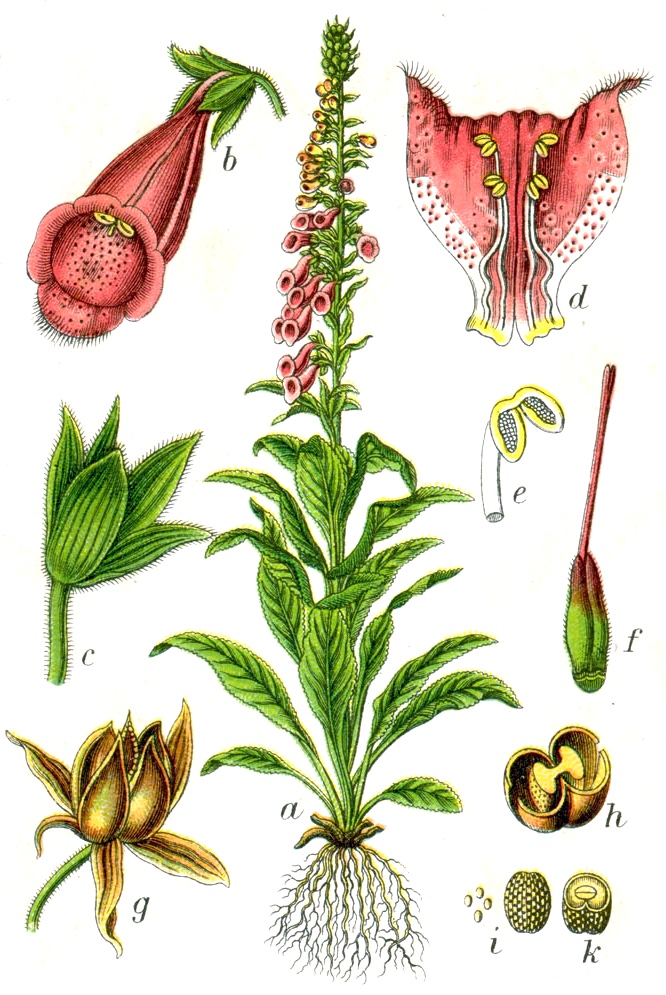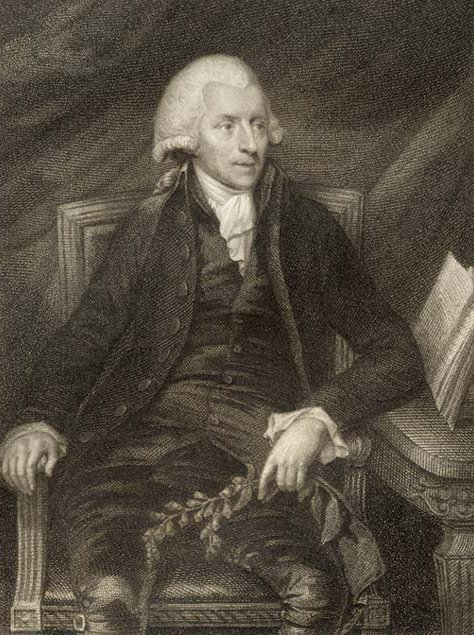Mother Hutton on:
[Wikipedia]
[Google]
[Amazon]
Mother Hutton, also known as Mrs. Hutton, old mother Hutton and "the old woman from Shropshire", was a mythical English character, fabricated in 1928 for marketing purposes by a
 Mother Hutton, also sometimes referred to as 'Mrs. Hutton', 'old mother Hutton' and 'the old woman from Shropshire', has for many years been popularly known as the 18th-century herbalist, physician and pharmacist, from Shropshire, who discovered by experimentation that foxglove could be used to treat
Mother Hutton, also sometimes referred to as 'Mrs. Hutton', 'old mother Hutton' and 'the old woman from Shropshire', has for many years been popularly known as the 18th-century herbalist, physician and pharmacist, from Shropshire, who discovered by experimentation that foxglove could be used to treat
 Later sources point to 'Mother Hutton' as being a mythical character,Winters, Robert W
Later sources point to 'Mother Hutton' as being a mythical character,Winters, Robert W
''Accidental Medical Discoveries: How Tenacity and Pure Dumb Luck Changed the World''
Simon and Schuster (2016). . fabricated in the 1920s for marketing purposes by a
''More Molecules of Murder''
pharmaceutical company
The pharmaceutical industry discovers, develops, produces, and markets drugs or pharmaceutical drugs for use as medications to be administered to patients (or self-administered), with the aim to cure them, vaccinate them, or alleviate sympto ...
, Parke-Davis
Parke-Davis is a subsidiary of the pharmaceutical company Pfizer. Although Parke, Davis & Co. is no longer an independent corporation, it was once America's oldest and largest drug maker, and played an important role in medical history. In 1970 ...
, that manufactured digitalis
''Digitalis'' ( or ) is a genus of about 20 species of herbaceous perennial plants, shrubs, and biennials, commonly called foxgloves.
''Digitalis'' is native to Europe, western Asia, and northwestern Africa. The flowers are tubular in sha ...
, a drug used to treat dropsy
Edema, also spelled oedema, and also known as fluid retention, dropsy, hydropsy and swelling, is the build-up of fluid in the body's tissue. Most commonly, the legs or arms are affected. Symptoms may include skin which feels tight, the area ma ...
.
The story involved real-life physician William Withering
William Withering FRS (17 March 1741 – 6 October 1799) was an English botanist, geologist, chemist, physician and first systematic investigator of the bioactivity of digitalis.
Withering was born in Wellington, Shropshire, the son of a surg ...
, who appeared to have learned of the value of the purple foxglove in the treatment of dropsy from 'Old Mother Hutton', the Shropshire
Shropshire (; alternatively Salop; abbreviated in print only as Shrops; demonym Salopian ) is a landlocked historic county in the West Midlands region of England. It is bordered by Wales to the west and the English counties of Cheshire to th ...
herb-woman whom he met in Stafford
Stafford () is a market town and the county town of Staffordshire, in the West Midlands region of England. It lies about north of Wolverhampton, south of Stoke-on-Trent and northwest of Birmingham. The town had a population of 70,145 in t ...
or Birmingham
Birmingham ( ) is a city and metropolitan borough in the metropolitan county of West Midlands in England. It is the second-largest city in the United Kingdom with a population of 1.145 million in the city proper, 2.92 million in the West ...
and to whom he gave gold sovereigns for the information, as depicted hypothetically in the painting by William Meade Prince (1893-1951). However, he never mentioned a Mother Hutton in his works and a number of dates have since been found to be inconsistent.
Story
 Mother Hutton, also sometimes referred to as 'Mrs. Hutton', 'old mother Hutton' and 'the old woman from Shropshire', has for many years been popularly known as the 18th-century herbalist, physician and pharmacist, from Shropshire, who discovered by experimentation that foxglove could be used to treat
Mother Hutton, also sometimes referred to as 'Mrs. Hutton', 'old mother Hutton' and 'the old woman from Shropshire', has for many years been popularly known as the 18th-century herbalist, physician and pharmacist, from Shropshire, who discovered by experimentation that foxglove could be used to treat dropsy
Edema, also spelled oedema, and also known as fluid retention, dropsy, hydropsy and swelling, is the build-up of fluid in the body's tissue. Most commonly, the legs or arms are affected. Symptoms may include skin which feels tight, the area ma ...
. She added it and a variety of other herbs to a specially brewed tea, which she gave out as a remedy to those who needed it.
One popular story tells of how Mother Hutton cured the Dean of Brasenose College, Oxford
Brasenose College (BNC) is one of the constituent colleges of the University of Oxford in the United Kingdom. It began as Brasenose Hall in the 13th century, before being founded as a college in 1509. The library and chapel were added in the mi ...
, Dr. Cauley. He came to her with a severe case of dropsy for which she gave her cure. Subsequently, various dates have been given including 1765, 1766 and 1776, when she was approached by physician William Withering
William Withering FRS (17 March 1741 – 6 October 1799) was an English botanist, geologist, chemist, physician and first systematic investigator of the bioactivity of digitalis.
Withering was born in Wellington, Shropshire, the son of a surg ...
who sought her recipe and deduced that it was the foxglove that was responsible for the success. His experiments confirmed the hypothesis and he was credited with standardizing the preparations and doses of digitalis.
Later reports
 Later sources point to 'Mother Hutton' as being a mythical character,Winters, Robert W
Later sources point to 'Mother Hutton' as being a mythical character,Winters, Robert W''Accidental Medical Discoveries: How Tenacity and Pure Dumb Luck Changed the World''
Simon and Schuster (2016). . fabricated in the 1920s for marketing purposes by a
pharmaceutical company
The pharmaceutical industry discovers, develops, produces, and markets drugs or pharmaceutical drugs for use as medications to be administered to patients (or self-administered), with the aim to cure them, vaccinate them, or alleviate sympto ...
that manufactured digitalis
''Digitalis'' ( or ) is a genus of about 20 species of herbaceous perennial plants, shrubs, and biennials, commonly called foxgloves.
''Digitalis'' is native to Europe, western Asia, and northwestern Africa. The flowers are tubular in sha ...
, a drug used to treat dropsy
Edema, also spelled oedema, and also known as fluid retention, dropsy, hydropsy and swelling, is the build-up of fluid in the body's tissue. Most commonly, the legs or arms are affected. Symptoms may include skin which feels tight, the area ma ...
.Emsley, John''More Molecules of Murder''
Royal Society of Chemistry
The Royal Society of Chemistry (RSC) is a learned society (professional association) in the United Kingdom with the goal of "advancing the chemistry, chemical sciences". It was formed in 1980 from the amalgamation of the Chemical Society, the Ro ...
, pp. 132-133.
She was created in 1928 in an illustration by William Meade Prince (1893-1951) as part of an advertising campaign by Parke-Davis
Parke-Davis is a subsidiary of the pharmaceutical company Pfizer. Although Parke, Davis & Co. is no longer an independent corporation, it was once America's oldest and largest drug maker, and played an important role in medical history. In 1970 ...
(later part of Pfizer
Pfizer Inc. ( ) is an American multinational pharmaceutical and biotechnology corporation headquartered on 42nd Street in Manhattan, New York City. The company was established in 1849 in New York by two German entrepreneurs, Charles Pfizer ...
) who marketed digitalis preparations. Prince depicted Withering as much older in the painting, as he assumed the discovery happened in 1785.
There is no mention of a Mother Hutton in Withering's works and no mention of him meeting any old woman directly - he is merely asked to comment on a family recipe that was long kept secret by 'An Old woman IN Shropshire'. That is all that Withering says and so all that can ever be known as fact about the old woman. Since 1928, Mother Hutton's status has grown from being an image in an advertising poster to an acclaimed Wise Woman, Herbalist, Pharmacist and Medical Practitioner in Shropshire who was cheated out of her true recognition by Dr. Withering's unscrupulous methods. Withering was in fact informed of the Brasenose College case by one of his medical colleagues (Dr Ash) and the Dean was treated with Digitalis root, not the leaves which Withering recommended. This myth of Mother Hutton has been created by authors not going back to primary sources but instead simply copying and then embellishing the work of others. One book even has Withering chasing round the countryside twice, once seeking a Gypsy woman and then an herbalist, both with secret recipes - simply because the author read two different versions of the story and did not realise they were different versions of the same fake tale.
References
{{DEFAULTSORT:Hutton, Mother Drug advertising Female characters in advertising Fictional British medical personnel Fictional characters introduced in 1928 Fictional characters from the 18th century Fictional pharmacists Pfizer Shropshire in fiction